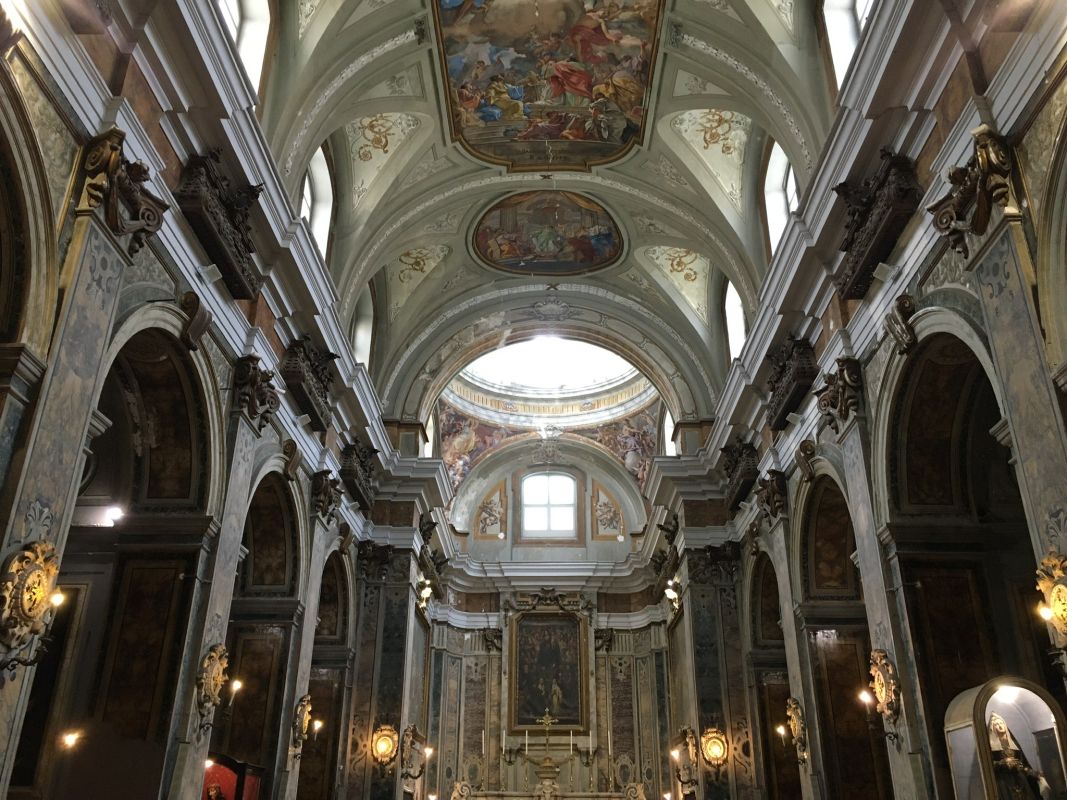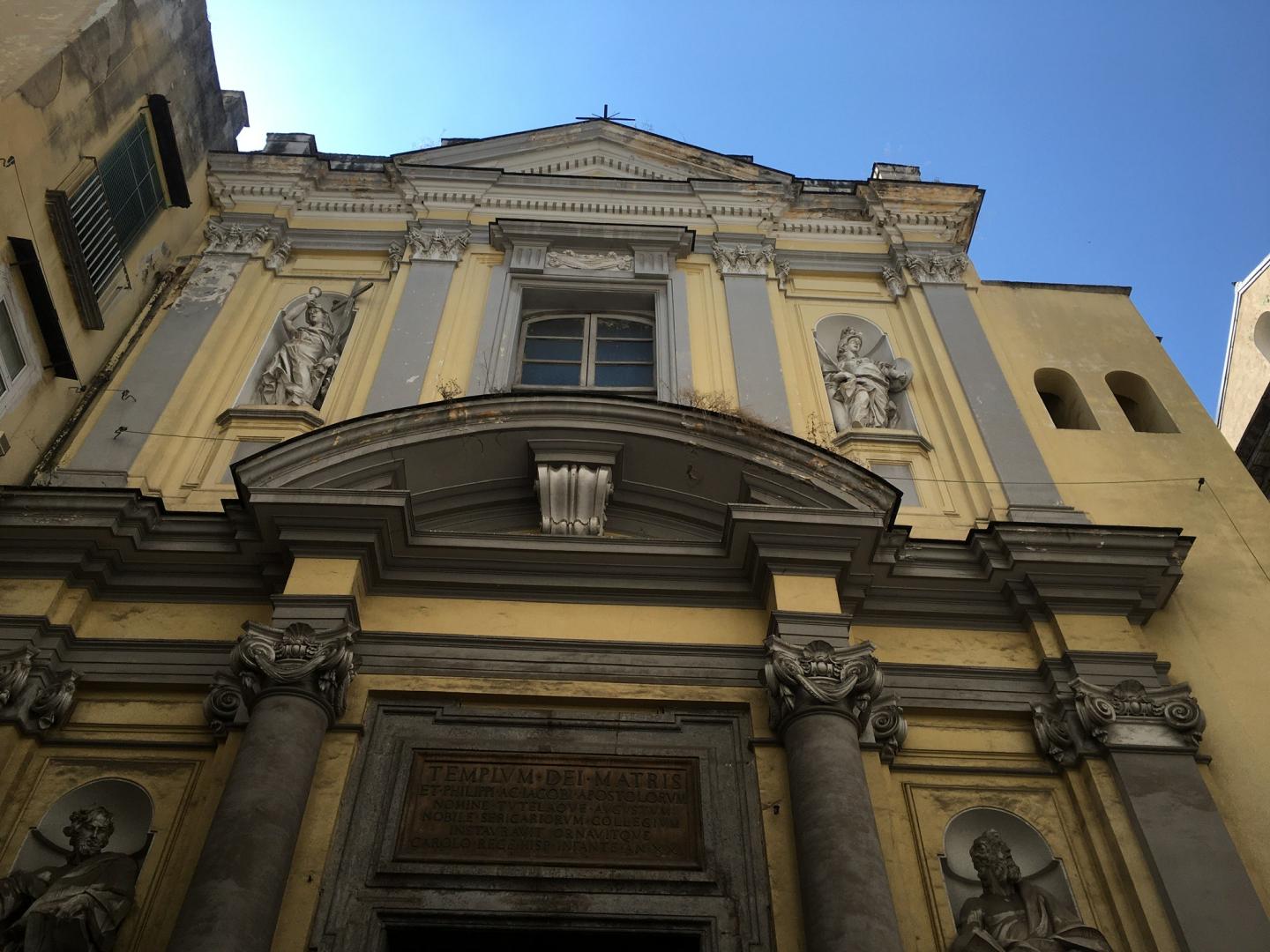Walking along the lower decumanus along via San Biagio dei Librai, a few steps from the church of Sant'Angelo a Nilo, we come across the church of saints Filippo and Giacomo.
It is an important religious building built starting in 1591 by the Silk Art Corporation, made up of weavers and merchants. During the sixteenth century, silk processing was extremely important in Naples, as well as throughout Italy. The corporation in question, founded in 1477 and strongly supported by the Aragonese, had a key role on a social level, because it dealt with the processing of silk which in the meantime had become a leading sector of the Neapolitan economy. The corporation also established an internal court, thanks to which members enjoyed some benefits.
The first church of the Arte della Seta, already dedicated to Saints Philip and James, to be honest, was located in Piazza Mercato and its name was connected to a conservatory which since 1582 hosted girls, orphans or daughters of some artisans of the silk art. Furthermore, the conservatory was responsible for ensuring a dowry for the guest girls who, in the meantime, learned to weave silk. Soon the number of girls involved grew dramatically and the corporation had to equip itself with a new headquarters, the current one on the lower decumanus.
The façade of the church is a notable testimony of Baroque architecture and is divided into two orders, the lower Ionic one and the upper Corinthian one. In the first, inside two niches, there are the statues of Saints Philip and James, created by the famous Neapolitan sculptor Giuseppe Sanmartino in 1758. In the second, however, we find the statues of Religion and Faith, sculpted by Giuseppe Picano, a student of Sanmartino. All the statues were made of white marble and with their whiteness they stand out against the yellow of the façade.
The interior of the church has a single nave, with four chapels on each side. Furthermore, the building does not have a transept. As soon as you enter, you are immediately struck by the wonderful frescoes on the vault of the nave depicting the Assumption of the Virgin by Jacopo Cestaro. Other works by this artist are found in the gallery where there are two canvases depicting Saint Philip breaking the idols and the Martyrdom of Saint James, created in the mid-eighteenth century. In terms of manners and style, Cestaro harks back to a mature Solimena and, above all, to the contemporary De Mura. We find these dependences on the great masters in the shapes of the characters, in the light, but above all in the colors, which are always vivid and crystalline. The interior of the church is embellished with Baroque-style polychrome marble, so much so that numerous artists worked here throughout the eighteenth century, such as Francesco Pagano, who skilfully juggled the various renovations and modifications.
Very interesting for their artistic workmanship are the two stoups placed on the sides of the entrance, created by Giacomo Massotti. With their shapes and colors they represent a fine example of Neapolitan rococo. On the main altar of the church it is possible to observe a panel by Ippolito Borghese depicting the Virgin and Saints, while at the entrance we find paintings by Ippolito D'Elia from the mid-eighteenth century. Very suggestive is the cooked majolica floor, which covers the entire nave, created by Donato Massa in 1738. The coat of arms of the Silk Art Corporation is imprinted in the center.
Finally, in the church there is also a crypt which can be accessed through a trap door. In this underground space, clearly a cemetery area, some of the members of the corporation were buried, especially the destitute ones.
Today the church is looked after by the "Respiriamo Arte" Association, which, since 2015, continues to work to spread the fascinating history contained in this religious building. The aim of the association, as can be understood, is the recovery of the historical-artistic heritage of the city of Naples, through the protection and valorisation of places and monuments that are too often abandoned.
Information
Opening hours: Saturday from 11 a.m. to 6 p.m. - Sunday from noon to 6 p.m.
reservation required - respiriamoarte@gmail.com
Full price ticket: €5.00




Comments powered by CComment